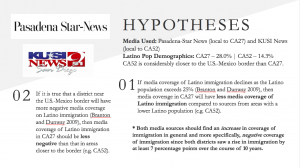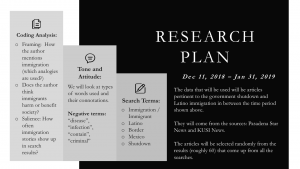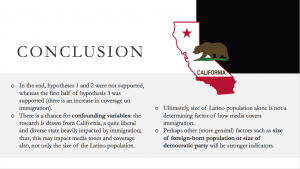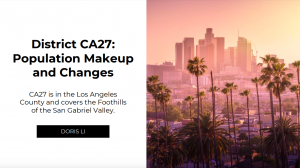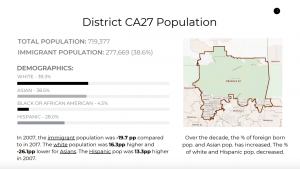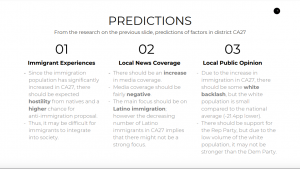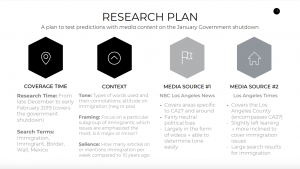Summary: Congresswoman Judy Chu advertises herself as a strong advocate of immigration issues and rights; however, she does not address a prevalent issue in her district: gentrification and in influx of wealthy Asian immigrants. Although she is an Asian American herself, her voter base still rests upon the support of whites, Latinos, and blacks/African Americans, who are becoming directly affected by the increasing housing prices. They are slowing being displaced; thus, the racial and socioeconomic diversity of the area has diminished. Chu should address this issue directly in her campaigns, in an effort to both help diversify the area and to gain more support from the non-Asian community.
CA27: Judy Chu’s Limited View on Immigration Policy
Last week, Chris Gadsden, former Jersey City Councilman, composed a letter to city development in response to gentrification in the local area. He expressed his concern with the new build plans, stating that they are too exclusive and that the private structures imply that the surrounding neighborhood is too poor to reside there and that they are simply “not wanted.”
What happened to Gadsden is not unique to New Jersey; this issue is prevalent nationally, particularly on the coasts of the US where immigration rates are the highest. The San Gabriel Valley has seen a large influx of Asian immigrants since the past decade and consequently, has brought along a side dish of gentrification. In California district 27, the effect of gentrification has negatively impacted the area by reducing racial and economic diversity there and encouraging an environment of hostility towards immigrants.
Congresswoman Judy Chu, who advertises herself as a strong supporter of immigration and advocate of immigration issues, should focus her lens on not only issues at the border and re-uniting families, but also on the gentrification issue, which affects immigrants in the district more directly and immediately. This is real and personal to many, which may, in turn, affect her election results in the future if no action is being done about this.
In 2007, the SGV, which was roughly equivalent to CA26 at that time, had a foreign-born population of 23.4%, with the racial demographic being the following: 58.2% White, 18.0% Asian, 4.5% Black or African American, and generally, 28.8% Latino or Hispanic. A decade later, the demographics have changed with the increase in immigration to that area; the immigrant population has increased by 15.2 percentage points, in which the Asian population has grown the most at 10.5 percentage points. The African American population has stayed stagnant, and both the white and Hispanic populations decreased (18.9 pp and 0.8 pp, respectively).
Indeed, more immigrants make up district CA27; however, isn’t strange how the Asian community blew up while the Hispanic and black immigrant populations barely changed? Now, more than ever, the Asian immigrants that reside in the district include Chinese entrepreneurs, already wealthy prior to immigrating. Thus, gentrification commences. In 2009, the Zillow Home Index in Arcadia, a city within the San Gabriel Valley, averaged to around $678,000, whereas in 2017, the average rose to $1.03 million. There is a starking $352,000 difference throughout the decade, which can be attributed to the increasing demand for both space and better living conditions in the city. Mansionization is a highly debated issue in Arcadia, where modest houses are being replaced by mansions at an alarming rate and to the point where there are mansions sandwiched by significantly smaller houses (and vice versa). What happens to those who can’t afford or keep up with the heavy increase in value of homes? Unsurprisingly, they are forced to move out.
Jackelyn Hwang and Robert J. Sampson, in “Divergent Pathways of Gentrifìcation: Racial Inequality and the Social Order of Renewal in Chicago Neighborhood”, find that the pace of gentrification in Chicago had a negative relationship with the concentration of blacks and Latinos (Hwang and Sampson 2014). Perhaps the reason why the numbers haven’t changed with respect to those populations is due to gentrification in the area. Looking at economic statuses in 2012, Asians made an average annual income of around $76,000, whereas blacks and Latinos both made roughly $45,000 annually in California. With this, immigrants of lower socioeconomic backgrounds struggle to support themselves and others in areas of rapidly increasing housing prices, and effectively, emigrate to other surrounding areas.
Indeed, the physical living conditions of wealthy immigrants improves while the lives of those who are less affluent begin to deteriorate. However, immigrant experiences as a whole, regardless of wealth begin to depreciate as more immigrants enter an area. According to Daniel Hopkins, in “Politicized Places: Explaining Where and When Immigrants Provoke Local Opposition”, as immigration increases in importance and relevance as an issue, there is a higher chance for immigrants in an area with changing demographics to be faced with hostility from natives (Hopkins 2010). If immigration in general triggers negative responses from the native population, isn’t it natural that gentrification will worsen this hostility? In Arcadia, the mansionization phenomenon has received major backlash from the natives; they argue that it disrupts the visuals and historical values in the city.
In a study done by Timothy Shortell, in his work The World in Brooklyn: Gentrification, Immigration, and Ethnic Politics in a Global City and reviewed by Nazgol Bagheri, uncovers that local politics and schools “favors gentrifiers’ interests over that of the original residents” (Bagheri 2013). With this, gentrification and immigration becomes a rather political issue, with the two opposing “parties” being the natives and the wealthy immigrants. As mentioned before, the average annual income for Asians was $76,000, which surpassed the average income for whites (approximately $69,000). With this, tensions arise between the two groups, as some policymakers may appeal to where the money is.
Representative Judy Chu, as an Asian-American woman, descriptively represents the Asian (immigrant) community better than the white native population. Although the majority of the population of the district is indeed Asian, there is still a considerable number of whites and most positions held in city councils within the district are still held by white Americans. Thus, Chu, although she has been winning safely in the recent elections, may face more and more backlash from the population affected by gentrification.
Ultimately, what this paper argues for is not that Chu should discourage wealthy Asians from immigrating to the San Gabriel Valley. Rather, there should be policy changes in the way wealth imbalances affect the community as a whole. Mansionization, for example, should be allowed only in specific areas of a city, and perhaps opening up programs to help support the less affluent immigrants would help increase diversity both ethnically and financially.

